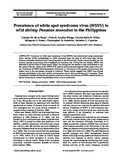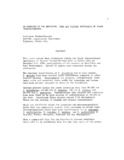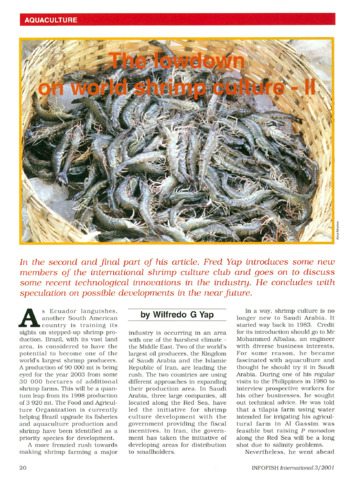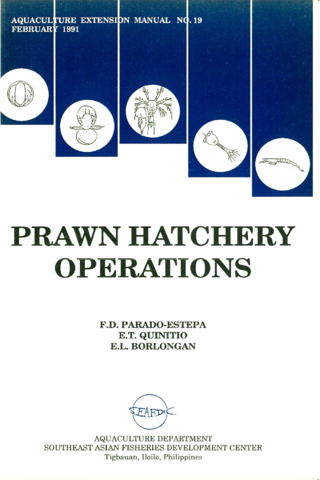Prevalence of white spot syndrome virus (WSSV) in wild shrimp Penaeus monodon in the Philippines

Associated URL
www.int-res.comNgày
2007Tác giả
Page views
318metadata
Hiển thị bản ghi đầy đủ mặt hàngCited times in Scopus
Share
trừu tượng
Prevalence of white spot syndrome virus (WSSV) was determined using polymerase chain reaction (PCR) methodology on DNA extracted from the gills of wild black tiger shrimp Penaeus monodon collected from 7 sampling sites in the Philippines. These 7 sampling sites are the primary sources of spawners and broodstock for hatchery use. During the dry season, WSSV was detected in shrimp from all sites except Bohol, but during the wet season it was not detected in any site except Palawan. None of the WSSV-PCR positive shrimp showed signs of white spots in the cuticle. Prevalence of WSSV showed seasonal variations, i.e. prevalence in dry season (April to May) was higher than in the wet season (August to October). These results suggest that WSSV has already become established in the local marine environment and in wild populations of P. monodon. Thus, broodstock collected during the dry season could serve as the main source of WSSV contamination in shrimp farms due to vertical transmission of the virus in hatcheries.
Suggested Citation
de la Peña, L. D., Lavilla-Pitogo, C. R., Villar, C. B. R., Paner, M. G., Sombito, C. D., & Capulos, G. C. (2007). Prevalence of white spot syndrome virus (WSSV) in wild shrimp Penaeus monodon in the Philippines. Diseases of Aquatic Organisms , 77(3), 175-179. https://doi.org/10.3354/dao01834
DOI
10.3354/dao01834Chủ thể
Taxonomic term
Bộ sưu tập
- AQD Journal Articles [1215]
Related items
Showing items related by title, author, creator and subject.
-
An overview of the nutrition, feed and feeding techniques of prawn penaeid/shrimps
Piedad-Pascual, Felicitas (Philippine Council for Aquatic and Marine Research and Development, 1989)This paper echoes what transpired during the first International Conference of Penaeid Prawns/Shrimps held in Iloilo City in December 4-7, 1984, particularly on the Nutrition nd Feed Development. Around 25 papers were ... -
The lowdown on world shrimp culture - II
Yap, Wilfredo G. (INFOFISH, 2001)This paper introduces some new members of the international shrimp culture club and goes on to discuss some recent technological innovations in the industry, particularly the polyculture of tilapia (mainly Oreochromis ... -
Prawn hatchery operations
Parado-Estepa, Fe D.; Quinitio, Emilia T.; Borlongan, Emeterio L. (Aquaculture Department, Southeast Asian Fisheries Development Center, 1991-02)The manual, an updated version of the 1984 SEAFDEC/AQD manual, presents the underlying principles and step-by-step instructions of prawn larval and post-larval rearing. The techniques described are not only applicable to ...





